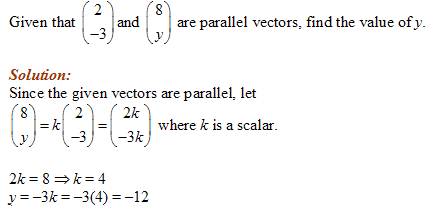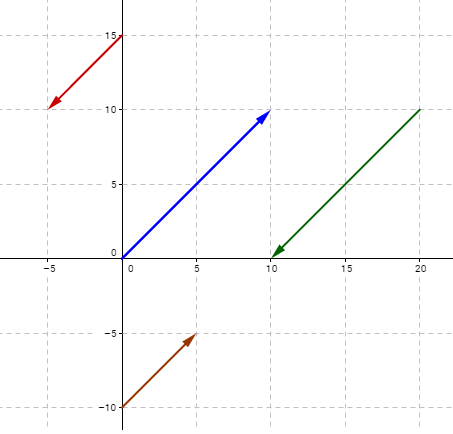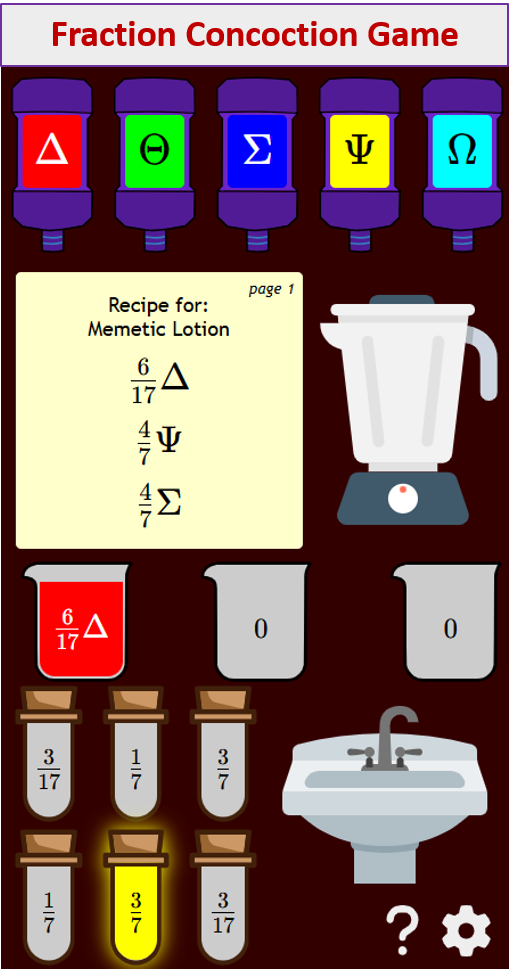Parallel Vectors
Related Pages
Vectors
Equal Vectors
Vector Multiplication
Vector Geometry
In these lessons, we will learn how to determine if the given vectors are parallel.
What Are Parallel Vectors?
A vector is a quantity that has both magnitude and direction.
Vectors are parallel if they have the same direction or opposite direction.
Two non-zero vectors, u and v, are parallel if and only if one is a scalar multiple of the other.
Mathematically, vectors u and v are parallel if:
u = kv
where k is a scalar (non-zero real number).
If k > 0, the vectors point in the same direction.
If k < 0, the vectors point in opposite directions (sometimes called anti-parallel).
Both components of one vector must be in the same ratio to the corresponding components of the parallel vector.
Example:

How To Define Parallel Vectors?
Two vectors are parallel if they are scalar multiples of one another.
If u and v are two non-zero vectors and u = cv, then u and v are parallel.
The following diagram shows several vectors that are parallel.

How To Determine If The Given 3-Dimensional Vectors Are Parallel?
Example: Determine which vectors are parallel to v = <-3, -2, 5>
What Are The Conditions For Two Lines To Be Parallel Given Their Vector Equations?
Lines are parallel if the direction vectors are in the same ratio.
Example: If the lines l1: \(r = \left( {\begin{array}{*{20}{c}}1\\{ - 5}\\7\end{array}} \right) + \lambda \left( {\begin{array}{*{20}{c}}{a - 1}\\{ - a - 1}\\b\end{array}} \right)\) and l2: \(r = \left( {\begin{array}{*{20}{c}}9\\3\\{ - 8}\end{array}} \right) + \mu \left( {\begin{array}{*{20}{c}}{2a}\\{3 - 5a}\\{15}\end{array}} \right)\).
Find the values of a and b.
What Is A Vector Is, How To Add And How To Prove Vectors Are Parallel And Collinear?
Examples:
- A, B, C are midpoints of their respective lines. Find the vector OB.
- N = midpoint of OB, M = midpoint of OA. Show that MN is parallel to AB.
- Given the vectors, prove that the three given points are collinear.
How To Answer A Question That Involves Vectors - Lines, Parallel, Perpendicular & Intersection?
Try out our new and fun Fraction Concoction Game.
Add and subtract fractions to make exciting fraction concoctions following a recipe. There are four levels of difficulty: Easy, medium, hard and insane. Practice the basics of fraction addition and subtraction or challenge yourself with the insane level.

We welcome your feedback, comments and questions about this site or page. Please submit your feedback or enquiries via our Feedback page.